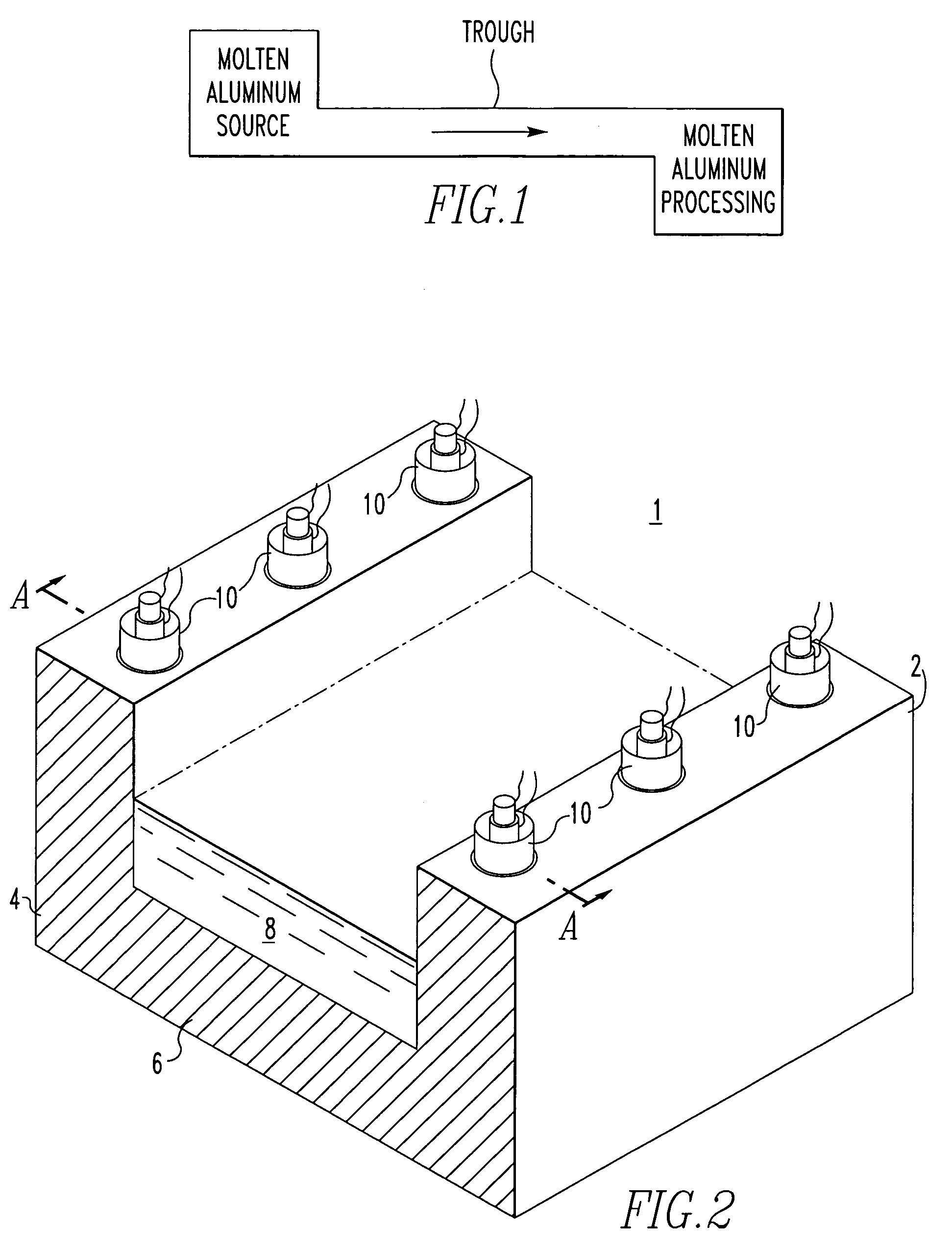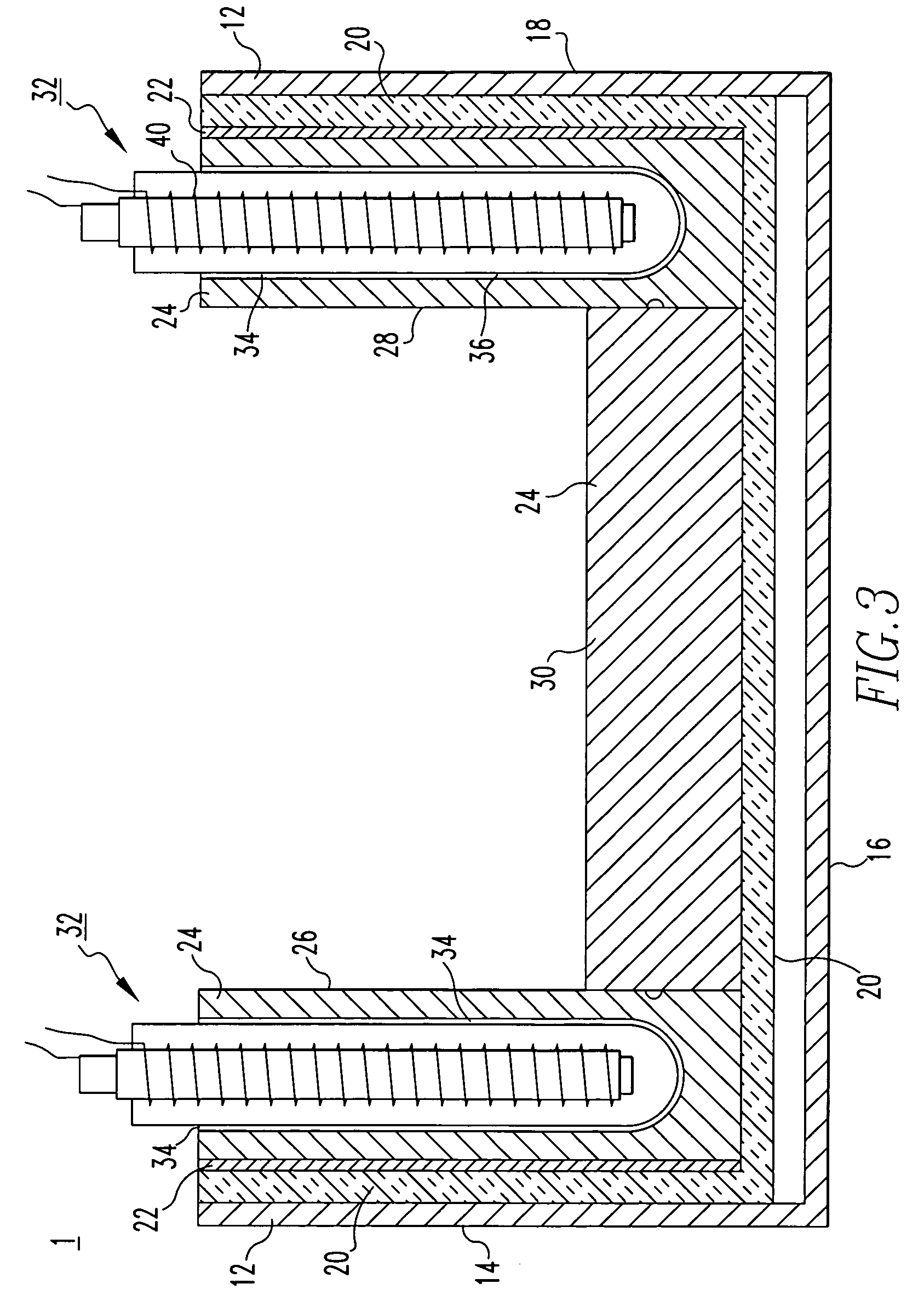Heated trough for molten aluminum
a technology of molten aluminum and troughs, which is applied in the direction of manufacturing converters, furnaces, charge manipulation, etc., can solve the problems of short service life of radiant heaters, limited metal conveying distance, and skim generation, and achieve the effect of improving refractory troughing
- Summary
- Abstract
- Description
- Claims
- Application Information
AI Technical Summary
Benefits of technology
Problems solved by technology
Method used
Image
Examples
Embodiment Construction
[0012]The refractory materials useful in the present invention for troughing can include alumina, silica, silicon carbide, base material or mixtures thereof. The refractory material can utilize mullite, kyanite, bauxite and kaolin, for example. Any refractory material may be used, depending on the end use. If the use is high temperature application, then the alumina, silica, or silica carbide are particularly useful. These materials are usually ground to provide a particle size preferably not greater than about 40 mesh with smaller particle size being preferred, e.g., less than about 30 mesh, to facilitate mixing with metal fiber reinforcing or heat conduction material. That is, the use of large particles resist mixing or intrusion into the metal fiber matrix, resulting in voids which adversely affect the integrity of the refractory body. Further, smaller particle size improves the fluidity of the refractory when mixed with a refractory cement prior to infiltrating the metal fiber m...
PUM
| Property | Measurement | Unit |
|---|---|---|
| temperature | aaaaa | aaaaa |
| diameter | aaaaa | aaaaa |
| diameter | aaaaa | aaaaa |
Abstract
Description
Claims
Application Information
 Login to View More
Login to View More - R&D
- Intellectual Property
- Life Sciences
- Materials
- Tech Scout
- Unparalleled Data Quality
- Higher Quality Content
- 60% Fewer Hallucinations
Browse by: Latest US Patents, China's latest patents, Technical Efficacy Thesaurus, Application Domain, Technology Topic, Popular Technical Reports.
© 2025 PatSnap. All rights reserved.Legal|Privacy policy|Modern Slavery Act Transparency Statement|Sitemap|About US| Contact US: help@patsnap.com



